Micro-XRF in Geology
Micro-XRF is a useful for studying structure and composition in geology, including analysis of:
- Element distribution
- Identification and analysis of single grains
- Line scans
You can also determine which minerals, rather than simply which elements are present in a rock, with new software from Bruker. This can also be used with EDX, and data can be shared between the two platforms.
Blue Scientific is the official distributor for Bruker Micro-XRF in the UK and Ireland. If you have any questions or if you’d like a quote, please get in touch:
Micro-XRF instruments
Contact us on +44 (0)1223 422 269 or info@blue-scientific.com
Geological Micro-XRF Applications
Perform qualitative and quantitative analysis of large samples up to 30 x 15 cm and 5 kg, without preparation. Micro-XRF has a variety of applications in geology, including:
- Large samples eg drill cores
- Thin sections
- Mining
- Minerals exploration and production
- Mineral phases
- Sediments
- …and many more
With HyperMap quantification, a complete spectrum is saved for every pixel of the map. This has multiple benefits when it comes to data evaluation:
- Calculate the distribution of single elements.
- Display the sum spectrum of the complete mapping.
- Examine single point and accumulated spectra.
- Trace analysis
- Line scans
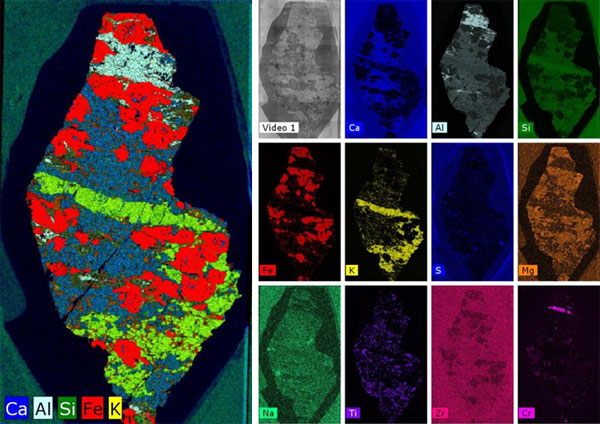
Study combined maps, as well as maps for individual elements
Advantages of Micro-XRF
- Fast measurement – 0.3ms per pixel and up to 4 Million pixels in a single HyperMap.
- High spatial resolution – down to 25 µm X-ray spot size and motor steps of 4 µm.
- Analyse inhomogeneous samples – identify areas of interest
- Non-destructive
- No sample preparation – for all types of samples: solids, powders and liquids
- Qualitative and quantitative analysis of all elements from Na upwards – due to vacuum chamber and detection limit for heavy trace elements in the low ppm range
Mineral Analysis
The Bruker TORNADO AMICS is the world’s first automated, benchtop mineral analyser using X-ray fluorescence technology, bringing together:
- Fast, high resolution elemental distribution analysis with the M4 TORNADO.
- Powerful mineral identification and classification software: AMICS (Advanced Mineral Identification and Classification System).
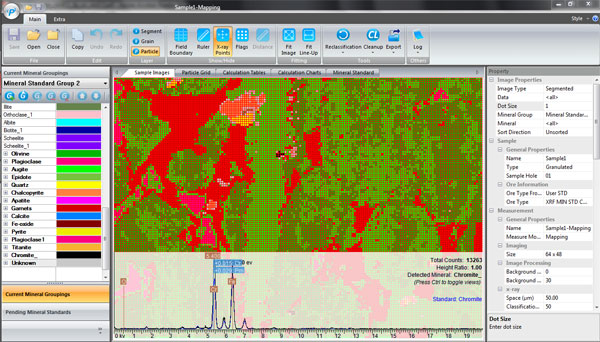
Analysing geological samples with AMICS: mineral class list, map, X-ray points and spectrum.
Both thin sections and large geological samples, e.g. drill cores and hand samples can analysed easily down to micrometre scale. This has many useful applications in mining and geoscience, as well as minerals exploration and production, for micro-scale analysis of large samples and mineral phase results. Determine modal mineralogy, mineral distribution and calculated assays.
- Centimeter scale mineral analysis with micrometer resolution
- Identify mineral phases by X-ray analysis, without the cost or complexity of SEM
- Minimal or no sample preparation for quicker results
- Easy set-up and automation for multiple samples
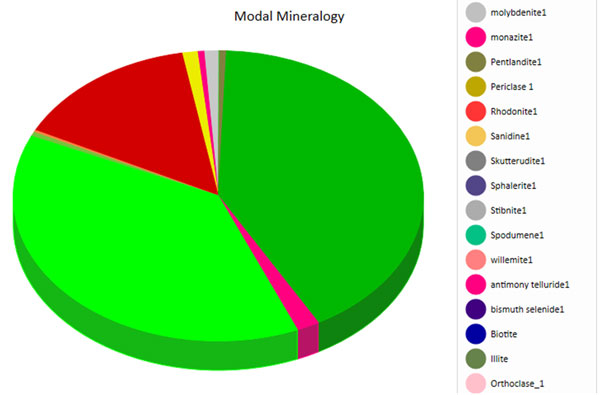
Modal mineralogy pie chart of a mineral map
Overcoming Previous Limitations
Analysing drill cores, thin sections, fossils and geologically interesting samples can be challenging, especially when studying the statistical and spatial distribution of minerals over large sample areas in the centimeter range.
Micro-XRF is more cost-effective than alternative SEM-EDS analysers, which also involve extensive sample preparation procedures and carbon coating. It can take a day to measure areas of more than a couple of square centimetres.
With micro-XRF, large samples can be analysed quickly; with little or no sample preparation, areas up to 190 x 160 mm can be analysed with high spatial resolution down to < 20 μm.
Large data sets can be handled easily by the software. Sample files with over 500,000 pixels can be reprocessed in minutes, including images, spectra, mineral identification and classification data.
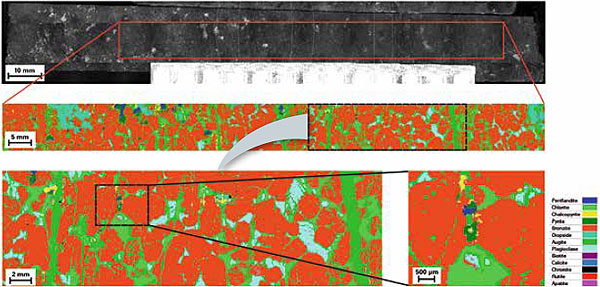
Drill core analysed over an area of 11.05 x 117.85 mm² at a resolution of 50 μm per pixel, with minerals classified at every pixel.
Further Information
Blue Scientific is the official distributor of Bruker Micro-XRF in the UK, Ireland and Nordic region. If you have any questions or if you would like a quote, please get in touch.
- Application note: Elemental distribution analysis on geological samples
- Application note: Analysis of geological thin sections
Bruker M4 TORNADO
Contact us on +44 (0)1223 422 269 or info@blue-scientific.com
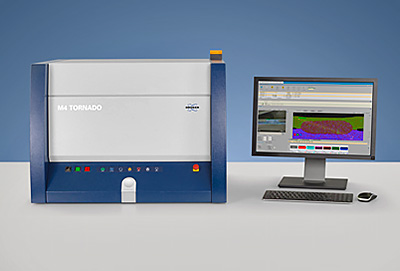
Bruker M4 TORNADO micro-XRF spectrometer


